Browse: Home / Kenneth Richard
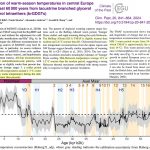
By Kenneth Richard on 22. July 2024
There were millennia during the past glacial (when CO2 levels were under 200 ppm) that were as warm or warmer than today. Four central Europe reconstructions, using collected evidence from disparate biomarkers, indicate there were periods (for example, 54,000 to 51,000 years ago, the Bølling–Allerød interstadial, 14,700 years ago) during the last glacial when temperatures […]
Posted in Paleo-climatology |
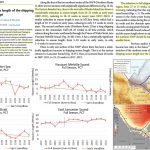
By Kenneth Richard on 18. July 2024
Global warming was supposed to open up Arctic region shipping routes, making the Northwest Passage easier and less risky to traverse. Per a new study, the opposite has happened. As we reported earlier this year, while a declining trend in Arctic sea ice was observed from the 1990s to 2007, there has been no trend […]
Posted in Arctic, Sea Ice |
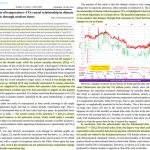
By Kenneth Richard on 15. July 2024
Popular claims that CO2 changes drive temperature changes currently or throughout the distant past “are based on imagination and climate models full of assumptions.” A comprehensive new study details a stochastic assessment determination of the sequencing of CO2 variations versus temperature variations since the 1950s, over the last 2,000 years (the Common Era), and throughout […]
Posted in Climate Sensitivity, Paleo-climatology |

By Kenneth Richard on 12. July 2024
A new study comprehensively eviscerates a 57-year-old modeling paper upon which nearly the entirety of the IPCC’s CO2-drives-climate paradigm is based. Dr. Roy Clark has published a new 73-page study that rips apart the Manabe and Wetherald (1967) paper (MW67) that effectively hatched the IPCC-popularized concepts of CO2 climate sensitivity, radiative forcing, and positive/negative feedbacks […]
Posted in Climate Sensitivity, CO2 and GHG |
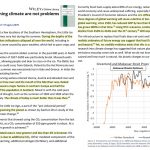
By Kenneth Richard on 8. July 2024
Instead, warmth and elevated CO2 are a boon for humanity. A new peer-reviewed paper published in The American Journal of Economics and Sociology (May and Crok, 2024) counters the prevailing “wisdom” that says a warmer climate and greener vegetation are problematic. The authors detail the horrors of the much colder Little Ice Age that destroyed […]
Posted in Warming/CO2 Benefiting Earth |
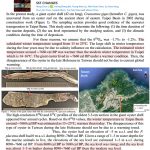
By Kenneth Richard on 5. July 2024
Scientists continue to uncover evidence of a much warmer Early Holocene, when CO2 hovered near 260 ppm. According to a new study, an ancient 42-centimeter long oyster shell has been found ~20 km inland from today’s Taipei Basin (Taiwan) coast. Extensive isotope analyses (69 of them) of a 5 cm section of the shell reveal […]
Posted in Oceans, Paleo-climatology |
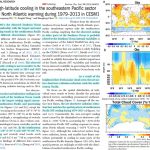
By Kenneth Richard on 1. July 2024
Scientists attempt to explain why approximately one-third of the global ocean’s sea surface temperatures cooled since the late 1970s. The 50-70°S Southern Ocean and 160°W to 80°W southeastern Pacific cooled by about -0.35°C (-0.117°C per decade) from 1979-2013 (Yao et al., 2024). (The cooling also continued to 2019, but the authors chose to use 2013 […]
Posted in Cloud Climate Influence, Cooling/Temperature, Oceans |

By Kenneth Richard on 27. June 2024
A new study documents the detrimental effects linked to living in close proximity to wind turbines. Living within 10 km of a wind turbine may be associated with serious consequences to the health and safety of people and animals. Examples include: • limb deformities in horses • birth defects (born with missing eyes and tails) […]
Posted in Wind Power |
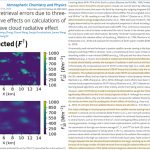
By Kenneth Richard on 24. June 2024
Modeling the main factors driving climate is riddled with and precluded by observational error. Some scientists now acknowledge this. Clouds are a main factor – even the “most important factor” – controlling changes in the Earth’s radiation budget, or climate (Sfîcă et al., 2021, Lenaerts et al., 2020). Image Source: Sfîcă et al., 2021 and […]
Posted in Cloud Climate Influence, Uncertainty Error |

By Kenneth Richard on 20. June 2024
Greenland has not warmed (net) in the last 90 years. From 80,000 to 20,000 years ago Greenland warmed by 10-15 Kelvin within a span of “a few decades” 24 times (Kypke and Ditlevsen 2024). These abrupt warming periods occurred without concomitant CO2 concentration changes. And, of course, without human interference. Image Source: Kypke and Ditlevsen […]
Posted in Cooling/Temperature, Natural Variability, Paleo-climatology |
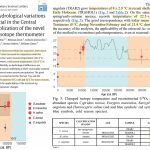
By Kenneth Richard on 17. June 2024
In a new study, scientists use the new “ostracod-clumped isotope thermometer” to reconstruct a much warmer Late Pleistocene/Early Holocene Mediterranean climate. Today’s average summer and winter temperatures are 22°C (21.4°C) and 8°C, respectively, at Central Italy’s Lake Trasimeno. Around 11,000-12,000 years ago, when CO2 hovered in the 220-230 ppm range, summer temperatures averaged 25°C, sometimes […]
Posted in Paleo-climatology |
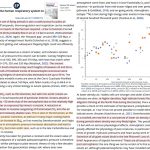
By Kenneth Richard on 14. June 2024
Atmospheric pressure may have been over 2.0 bar during the Jurassic, which may explain why Antarctica was a densely vegetated rainforest during that time. It has long been understood that atmospheric pressure is one of the primary determinants of a planet’s temperature, with higher pressure (for example, Venus at 92 bar) yielding warmer climates due […]
Posted in Misc. |

















Recent Comments